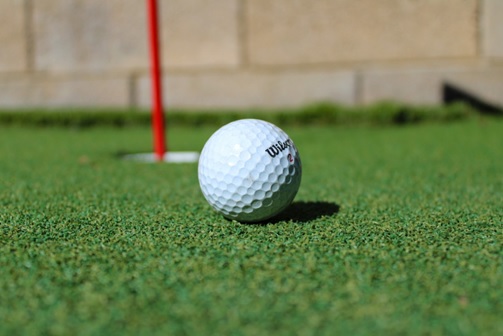Putting 101: How To Master The Basics And Putt Like A Pro
Whether you’re a new player or have been playing for years, chances are you could use some help improving your game. Putting can be challenging for golfers of all levels; even the best players struggle to consistently hit accurate shots. Instead of thinking that you’re not good enough to putt like a pro, think of it as an opportunity to learn and improve. To be great at anything, you need to practice and make sure you’re always working on your skills. So, read on for some tips to think about in your next training session!
The Basics
For all the beginners out there, putting is a golf stroke which is made with a club called a putter. One of the essential skills when putting is ensuring that the putt is lined up; a skilled putter will ensure that the head of the club is aligned to the hole. When putting, the clubhead remains low to the ground, and the ball is hit with a pendulum motion. To control how far the ball goes, the golfer must control the backswing of their club. Hopefully the skills required for putting are a little clearer now, so it’s time to start looking at how any golfer, amateur or pro, can hone their technique.
Alignment
Accurate alignment is the most important part of putting. If you’re unaligned, the ball isn’t going to roll in the correct direction. Not only do you need to align the putter, but you also need to focus on your own stance. First, make sure that the sole of the putter is flat on the ground and that the shaft of the putter is leaning slightly towards the target. Once you’ve established this, move your body parallel to the target line. There should be a slight bend in your knees and a forward tilt in your hips.
Stroke
When making a putt, you must only use your shoulders. Don’t make the common mistake of using your wrists in an attempt to control the putt. In addition to this, your lower body should remain completely stationary. It is your shoulder and abdominal muscles which work to provide power and precision to your putting stroke. When completing your stroke, check that the head of the putter does not rotate; it should first move straight back and then forwards towards the ball.
If you’re struggling to perfect your stroke, the Visio Golf Putting Training Aids might be able to help you. These training aids include items such as putting templates, which are extremely helpful as they give you both visual and kinesthetic tips to help you improve your stroke. With this, you’ll be able to master both the trajectory and the angle of your shot much quicker.
Grip
So far, we’ve looked at some very hard and fast rules of technique. But, when it comes to grip, there are several different variations. It’s recommended to try them all out before settling on the grip that works best for you.
Traditional Grip
For the traditional grip, place your right hand at the bottom of the putter grip with your thumb pointing straight downwards. Then wrap the middle, ring, and pinky fingers of your left hand round the back of the shaft. Finally, place the index finger of your left hand over your right hand. This grip enables you to effectively lock your hands. If you use it, it can help prevent you from relying on your wrists and rotating the clubhead.
Claw Grip
To achieve the claw grip, place the putter into the palm of your left hand. Wrap your fingers around the putter and let your thumb point down on the surface of the handle. Then, turn the palm of your right hand face down. Split your thumb apart from the rest of your hand to make a ridge in which the putter will sit. This grip prevents wrist movement as it means you are almost putting from just one hand. This should encourage you to use the strength of your shoulders and putt with the intended rocking action.
Prayer Grip
This method of the prayer grip is to have your hands level and facing opposite one another. This grip will help your technique because it ensures that your shoulders are level. Moreover, because your hands are level, it will stop one hand from taking over the motion. The grip also increases stability because the opposing palms will be able to squeeze the putter between them.
Split Handed Grip
The final grip that we’ll cover is very similar to the traditional grip. However, as the name ‘split handed’ suggests, you move your hands apart to create a gap between them. The advantages of this is that the gap is said to increase control over the putter, which will also increase your accuracy.
Hopefully these tips have helped you realize where you might be going wrong when you’re putting. So, make sure to think about them in your next training session. If you’re still struggling, it’s always good to ask for help. Don’t be afraid to look on YouTube, purchase a training aid, or even look into getting a coach.










